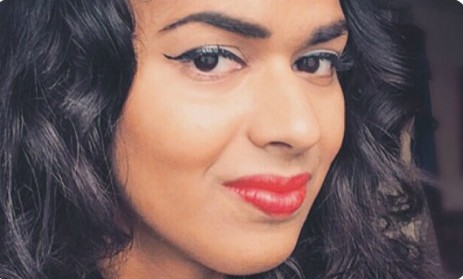Two weeks ago, I started the history of makeup serie with the history of eyeliner. Today it’s time for the second episode: red lipstick. My favorite! So let’s start with my personal red lipstick history.
Personal red lipstick history
It all started with a bold red marker. Back in the 90s, when I was about 8 years old my red lipstick fascination was awakened. Just 8 years old and I was already from the “actions speak louder than words” department. So one fine day, I took a bold red marker and started painting my lips. Nice red lips. I didn’t get it off, so it was also waterproof! You can understand that I was the only one who thought this was a good idea. Eventually I did get the marker off. After three days. I stayed away from the red markers on my lips for a while. However: true “red” love never grows old. About 10 years ago, red lipstick and I found each other. For good.
Wordwide red lipstick history
It is believed that Mesopotamian women were the first people who invented lipstick more than 5000 years ago. They would crush stones and add the stones substance on their lips. And then there was Cleopatra, who apparently made her own shiny lipstick (shade) by crushing ants, fish scales and beetles…Imagine giving someone a kiss afterwards or eating your food. Yammmm! A little bit of you and a little bit of crushed ants and beetles. Other Egyptian women would use a mix of fucus-algin, iodine, and bromine mannite. Sounds pretty harmful and unhealthy, right? Well it was. It led to the expression “Kiss of death” because the ingredients were so toxic that it could lead to serious illness and in some cases death.
16th century: Red lips? You’re a witch!
In the Middle Ages (red) lipstick went out of fashion, because it was believed that lipstick was something for lower class women. In the 16th century lipstick was widely used thanks to Elizabeth I, who popularized it in that era. In the 17th century it was not a good idea to wear red lipstick or any other makeup for that matter. Women who wore makeup were seen as witches. The English Parliament even passed a law saying lipstick was connected to witchcraft. Also marriages could be cancelled if women wore lipstick before marriage. In the early 1900s, everyone came back to their senses. Lipstick became popular again and it never went out of fashion.
Red lipstick and the comeback of femininity and glamour
The 1920s were the years of dark eyes and very dark (red) lipstick, because traditional red shades could not be seen on black and white film. The 1930s caused a huge sale of lipstick. Sunbathing became popular. Those were the pre-SPF times and lipstick was considered as sun protection. Also lipstick was advertised as an important part of the war effort, stimulating women to do their part and buy lipstick. In the 1940s, supplies were running out because of the war, so the first non-smear lipstick was introduced which promised to stay put all day. Young girls were being discouraged to wear lipstick because it was seen as “undesirable” for girls of that age. On the other hand, popular brands like Maybelline, Revlon and Covergirl marketed lipstick on their target group (16+ and older). And it worked. Most American women (apparently an estimated 90%) wore lipstick in the 1940s. In the 1950s red lipstick was fully accepted and closely linked to femininity and glamour. Popular actresses like Marilyn Monroe, Rita Hayworth and Elizabeth Taylor gave the sale of lipstick another boost: 98% of American women were wearing lipstick in that decade. In the 1960s and 1970s “Mod” era, red was replaced with beige and nude (combined with heavily smokey eyes). During the 1980s and 1990s, bold red lipstick made its comeback and it stayed that way for everyone who likes it bold. Well, I love red lips and I cannot lie…and you?

Note: This post does not include a complete history of lipstick. I only included some historical highlights in this blogpost that I found interesting.
Want more spice and chocolate? You can follow me on facebook, instagram, twitter, bloglovin and pinterest!













the red lips makes you so attractive!!